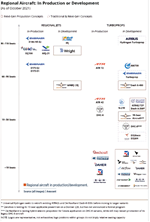REGENT progresses seaglider prototype development, prepares for crewed testing
All-electric composites-intensive maritime craft will enhance coastal transportation capabilities by mid-decade.
Share
Read Next
Regional Electric Ground Effect Nautical Transport Craft Inc. (REGENT, North Kingston, R.I., U.S.), the manufacturer of all-electric seagliders, is progressing the development of its full-scale, 55-foot-long carbon fiber prototype, Viceroy, which will carry people on board later this year. The company has been partnering with composites fabrication and engineering firm Moore Brothers Co. (Bristol, R.I., U.S.), with the intent of entering commercial service by mid-decade.
REGENT was founded outside of Boston in late 2020 with the vision to democratize access to high-speed coastal transportation with all-electric seagliders. As the company grew and interest in seagliders increased, Rhode Island was chosen as for the location where the company could scale from prototyping startup to manufacturer and worldwide distributor.
“Rhode Island was the only place that made sense for us,” says Billy Thalheimer, co-founder and CEO of REGENT. “From diverse coastal testing environments, to world-class maritime composites expertise, to a central location that combines aerospace, defense and maritime talent, Rhode Island offers a combination of factors to enable our team to make seagliders a global success.”
Since the unveiling of its full-scale prototype in April 2023, REGENT says it boasts a global order book of more than 600 seagliders worth over $9 billion, spanning aviation, ferry, and freight and lessor customers, with order holders and strategic investors in more than 15 countries across six continents. REGENT has also raised $90 million in support of its vision.
The company has also grown to a team of more than 80 employees, attracting talent from companies including Boeing, SpaceX, GE Aerospace, the US Coast Guard and the America’s Cup.
Seagliders all-electric maritime vessels that offer high-speed transportation to connect coastal communities. They operate in three modes: Float, foil or fly. Seagliders float on their hull at docks or while maneuvering at low speeds, using existing dock infrastructure to pick up and drop off passengers and goods. They also rise onto hydrofoils — wings that operate underwater to lift the hull out of the water to reduce drag and avoid waves — to navigate harbors and channels and reach low takeoff speeds. Finally, seagliders fly over open water at speeds up to 180 miles per hour on a cushion of air using a phenomenon called “ground effect,” always flying within one wingspan of the water’s surface.
Related Content
-
Al Seer Marine, Abu Dhabi Maritime unveil world’s largest 3D-printed boat
Holding the new Guinness World Record at 11.98 meters, the 3D-printed composite water taxi used a CEAD Flexbot to print two hulls in less than 12 days.
-
Orbital Composites installs robotic AM system at University of Rhode Island
The 12-axis Orbital S system designed to print continuous fiber-reinforced parts will be used to advance research in composites for underwater unmanned vehicles.
-
Pro-Set named official materials supplier for New York Yacht Club American Magic
Competitive sailing team prepares for the 37th America’s Cup beginning in August 2024 with adhesives, resins and laminate testing services for its AC75 monohull construction.
















